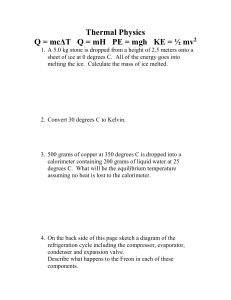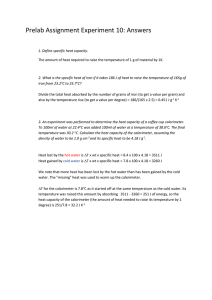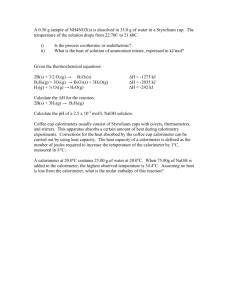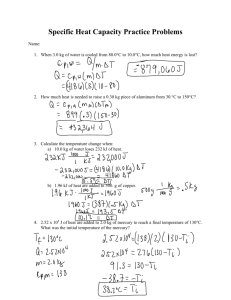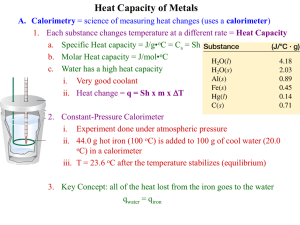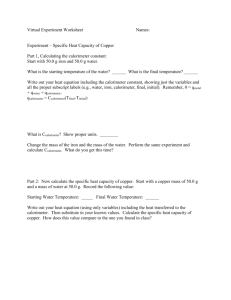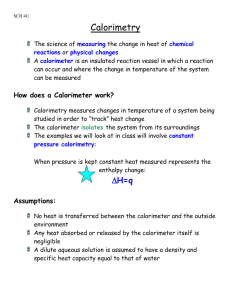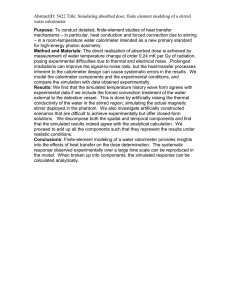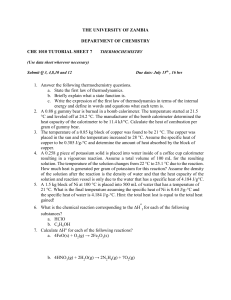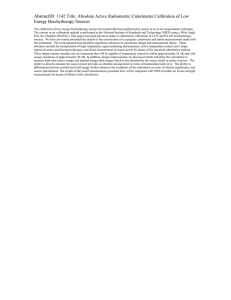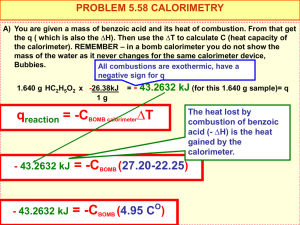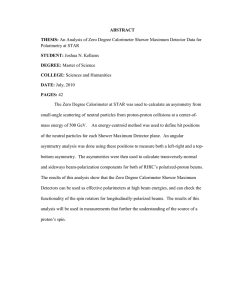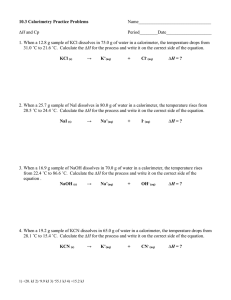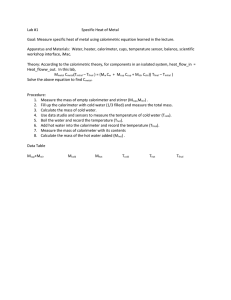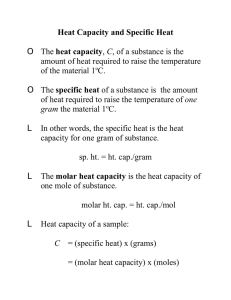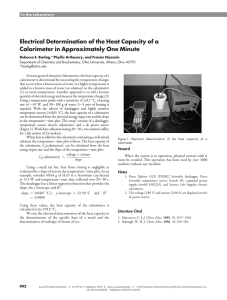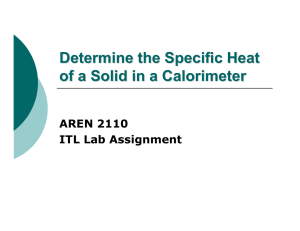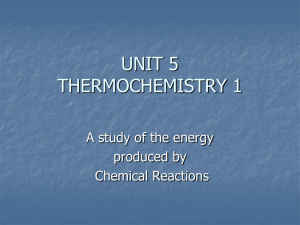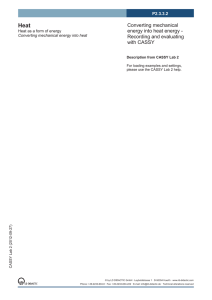Practice FRQ At 20 °C (approximately room temperature) the
advertisement
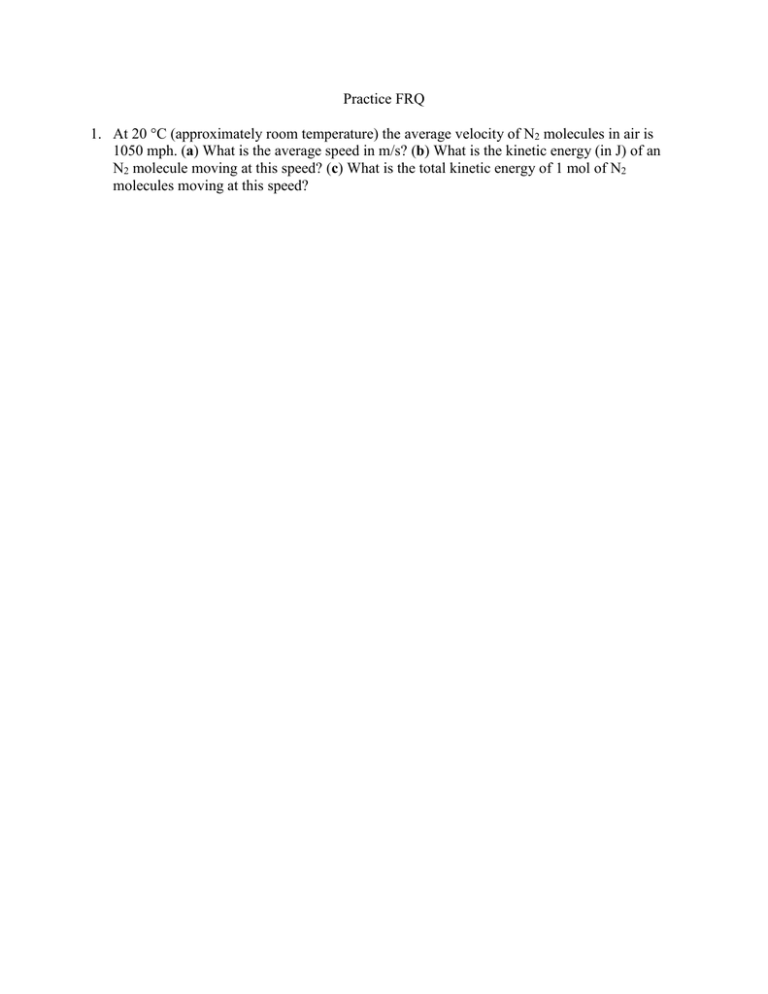
Practice FRQ 1. At 20 °C (approximately room temperature) the average velocity of N2 molecules in air is 1050 mph. (a) What is the average speed in m/s? (b) What is the kinetic energy (in J) of an N2 molecule moving at this speed? (c) What is the total kinetic energy of 1 mol of N2 molecules moving at this speed? 2. A coffee-cup calorimeter of the type shown in Figure 5.17 contains 150.0 g of water at 25.1 °C. A 121.0-g block of copper metal is heated to 100.4 °C by putting it in a beaker of boiling water. The specific heat of Cu(s) is 0.385 J/g-K. The Cu is added to the calorimeter, and after a time the contents of the cup reach a constant temperature of 30.1 °C. a. Determine the amount of heat, in J, lost by the copper block. b. Determine the amount of heat gained by the water. The specific heat of water is 4.18 J/g-K. c. The difference between your answers for (a) and (b) is due to heat loss through the Styrofoam® cups and the heat necessary to raise the temperature of the inner wall of the apparatus. The heat capacity of the calorimeter is the amount of heat necessary to raise the temperature of the apparatus (the cups and the stopper) by 1 K. Calculate the heat capacity of the calorimeter in J/K. d. What would be the final temperature of the system if all the heat lost by the copper block were absorbed by the water in the calorimeter? 3. We can use Hess’s law to calculate enthalpy changes that cannot be measured. One such reaction is the conversion of methane to ethylene: 2 CH4(g)C2H4(g) + 2 H2(g) Calculate the ΔH° for this reaction using the following thermochemical data: CH4(g) + 2 O2(g) CO2(g) + 2 H2O(l) ΔH° = -890.3 kJ C2H4(g) + H2(g) C2H6(g) ΔH° = -136.3 kJ H2(g) + ½ O2(g) H2O(l) ΔH° = -285.8 kJ 2 C2H6(g) + 7 O2(g) 4 CO2(g) + 6 H2O(l) ΔH° = -3120.8 kJ
